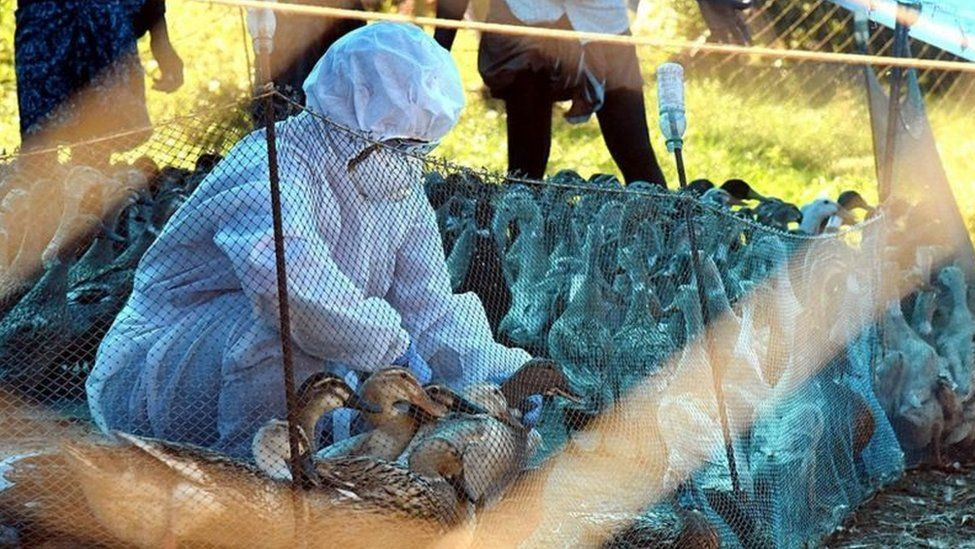
'Double mutant' most common variant now: India's genome data
Hindustan Times
Published:18 Apr 2021, 12:28 PM

'Double mutant' most common variant now: India's genome data
The so-called double mutation coronavirus found in Maharashtra may be becoming the most prevalent among all mutant variants in India, genome sequencing data submitted by Indian scientists to a global database indicates, according to a recent analysis that takes into account when they were detected.
The analysis shows for the first time how the detection of various variants of the coronavirus may have changed.
The double mutation virus – now classified as B.1.617 – was the most common in the samples sequenced in the 60 days prior to April 2 at 24%. The variant was first detected on October 5 and was relatively obscure till it began popping up on increasing number of samples January onwards, the India situation report on outbreak.info showed. On April 1, it accounted for 80% of all analysed genome sequences of mutant variants sent by India to the global repository GISAID.
The second most-commonly found variant in the last 60 days was the UK variant, or B.1.1.7, at 13% of the samples, according to the assessment by scientists from Scripps Research.
Both trends could be worrying for India, and, at least to some degree, explain the outbreak pattern. B.1.617 was first found in a large number of samples in Maharashtra, the first hot spot region of the second wave of infections that, till April 7, added more than half the new cases being recorded in the country.
The researchers at outbreak.info added that this data may not reflect the true prevalence patterns. "SARS-CoV-2 (hCoV-19) sequencing is not a random sample of mutations. As a result, this report does not indicate the true prevalence of the mutations but rather our best estimate now."
The data may also be skewed depending on whether all genomes sequenced were uploaded, although the trends -- where B.1.617 has steadily grown in comparison to others variants among samples -- supports the overall pattern.
But a top official involved in India's coronavirus genome sequencing efforts said the findings were consistent with what has been observed by them at the ground.
"Nearly 60 to 80% of the samples from Maharashtra have the variant; the prevalence must be similar in Gujarat. Elsewhere, it is under 10 to 20%. From barely existing in December, it is now found pretty much everywhere we look. We have a separate column for the variant for every state now," said Anurag Agarwal, director, Institute of Genomics and Integrative Biology, one of the ten labs under Insacog.
"We have a fairly good idea about which mutated variant is prevalent where; but the important thing is all of them are increasing," he added.
"The B.1.617 variant is prevalent towards the West in Maharashtra and Gujarat. The B.1.1.7 variant is prevalent in the North in Punjab. In South India, the one with N440K mutation is prevalent but that seems to be quiet. Eventually, one of the other variants will reach there. And, in the East, we do not have a particular variant but the South African variant is fairly common in Bangladesh, causing almost 80% of the cases so that might cross over to India. That will be troublesome for the AstraZeneca vaccine."
The double mutation refers to specific changes, among some others, that are denoted by E484Q (glutamate is replaced by glutamine at the 484th spot of the spike protein) and L452R (substitution of leucine with arginine at the 452nd position).
Both are being investigated for giving the virus an ability to evade immunity from a past infection, even vaccines. L452R has also been found in a variant spreading in California, US, where it was implicated in a large outbreak earlier this year. In an interview to HT on Wednesday, India's principal scientific adviser K VijayRaghavan said B.1.617 could now be considered a "variant of concern", or VOC.
The UK variant, B.1.1.7, has been confirmed to be more transmissible and was similarly implicated in a large resurgence of cases across the UK.
A second scientist involved in the sequencing efforts said more evidence is required to tie mutations with case trends. "The double mutant variant is increasing in the country. But the rise in cases cannot be attributed solely to the mutated variants. Human behaviour plays a very important part in transmission; in the UK when the new variant started spreading a lockdown controlled the spread," said Dr Rakesh Mishra, director, Centre for Cellular and Molecular Biology (CCMB), one of the 10 laboratories in Insacog.
Dr Saumitra Das, director of National Institute of Biomedical Genomics – Kalyani, said: "We have not been able to establish that the new variant is the reason behind the faster spread of the infection during the second wave; it is the behaviour of the people."
The analysis, published on outbreak.info, also showed that a large number of B.1.617 samples were detected in West Bengal. The 117 B.1.617 samples in Bengal accounted for 9% of the all genomes sequenced in the state till now. In Maharashtra, at 120, there were more samples but these accounted for 6% of the 1,931 samples sequenced.
"To describe the prevalence of sets of mutations in our Mutation Situation Reports, we rely on shared virus sequences from the GISAID Initiative. While we apply filters to remove some low quality sequences and unreasonable metadata as described in our methods, we rely on the accuracy of the sequences and sample metadata deposited in GISAID," the outbreak.info website said.
In all, the B.1.617 variant has been found in 408 sequences sampled across the world. Of these, 265 have been found in India from among the 8,455 sequences analysed in the outbreak.info report.